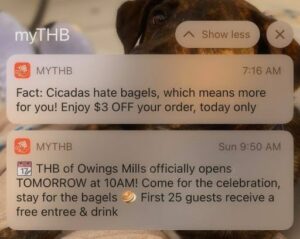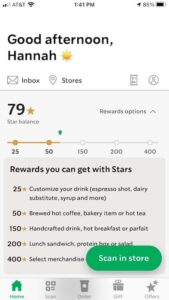3 Major Forms of Digital Direct Marketing
Build strong customer relationships by developing a digital direct marketing campaign. By using email, mobile app, and web browser marketing strategies, companies stay at the forefront of their customers’ minds.
Updated on December 1, 2021
Need help selecting a company?
Based on your budget, timeline, and specifications we can help you build a shortlist of companies that perfectly matches your project needs. Get started by submitting your project details.
What is Digital Direct Marketing?
Direct marketing is a promotional strategy that allows companies to connect directly with their customers. Rather than releasing broad advertising campaigns, such as TV ads, companies choose to cut out the middleman and distribute information directly to their target audience.
By working directly with their customers, companies are able to personalize content, build relationships, and increase brand loyalty.
Traditionally, direct marketing tactics included sending print mail, telemarketing, or door-to-door sales. However, some companies seek to capitalize even more from their direct marketing campaigns by reaching out to their customers online.
Known as digital direct marketing, this strategy uses digital channels to strengthen customer relationships.
Types of digital direct marketing campaigns include:
- Social media
- Texting
- Digital Ads
Digital Direct Marketing vs. Traditional Direct Marketing
Over the last decade, internet usage has steadily increased. In 2020, the average user spent 145 minutes online per day, making it one of the best ways for companies to engage with their customers.
Thanks to online channels, digital direct marketing allows companies to carefully target their audience, test strategies, and analyze their results. In comparison, traditional direct marketing is expensive and difficult to collect data on.
For example, direct mail can cost between 30 cents to $10 per person depending on the cost of design, copywriting, printing, and distribution. However, many companies can eliminate costs on printing and distribution by sending emails to their contact lists instead.
Even then, people can easily throw away print mail or hang up on telemarketers. What’s worse is that there is almost no way for companies to measure how effective their direct marketing campaigns are.
Digital marketing strategies, however, can automatically track engagement rates and sales. By providing a wealth of data, they’re easier to analyze so companies can adjust their campaigns.
Finally, digital marketing is considered less intrusive than traditional direct marketing, which can help companies appeal to customers.
Benefits of Digital Direct Marketing
Digital direct marketing provides the same level of personalization as traditional direct marketing strategies but is benefited by digital channels. Consequently, it’s a useful and effective marketing strategy.
Here are the primary advantages of digital direct marketing:
- Environmentally friendly
- More affordable
- Targets customers more effectively
- Collect data
- Easier to change quickly
By developing a comprehensive digital direct marketing strategy, businesses can grow brand awareness, increase engagement, and grow sales.
What Are the Three Major Forms of Digital Direct Marketing?
For businesses looking to build strong connections with their clientele, there are 3 ways they can interact directly with their customers online:
1. Email Marketing
2. Mobile App Marketing
3. Web Browser Marketing
Email Marketing
According to HubSpot, 99% of consumers check their emails every day, making email marketing an effective way to directly connect with customers, generate web traffic, and promote a brand.
The first step in developing an email marketing campaign is developing an email list. ’
Methods of Email Collection
- Adding call to actions (CTAs) to existing web content that invite customers to sign up for promotions and emails.
- Creating a pop-up that asks for contact information when a new visitor enters a site.
- Pitching an email newsletter on social media accounts and in email signatures.
- Gated content that asks for an email in exchange for a valuable piece of content.
To keep customers engaged after they’ve subscribed to an email list, companies must develop content that stands out and provides valuable information to readers.
For example, Loft included a picture of one of their models in an email to their subscribers. By changing up the background color and including links to various landing pages, they were able to grab their readers’ attention.

Source: HubSpot
In the email, they also included a CTA that asked their subscribers to update their preferences. In doing so, they can receive more information about their customers which helps to provide personalized content that interests their readers, ensuring that campaigns in the future will be more effective.
Here are a few content ideas for an engaging email campaign:
- Coupons
- Deals
- Information on new products
- Newsletters
By sending regular emails to customers, businesses can keep their brand on the top of their customers’ minds.
Recommended Reading, “Email Acquisition & How to Convert Leads.”
Mobile App Marketing
Mobile app marketing allows companies to reach their audience on the device they use most — their phones.
In 2019, it was estimated that people spent 90% of their mobile time within apps.
Mobile apps allow companies to personalize interactions with their customers, increase visibility, and improve the customer experience. As a result, many businesses have invested in developing their own app.
To make the most of their investment, they must promote their platform, keep users engaged, and drive in-app purchases.
There are several ways companies can connect with their customers to drive engagement, including:
- Push Notifications
- Loyalty Programs
- In-App Messaging & Surveys
Push Notifications
Similar to text messages, push notifications capture potential customers’ attention in seconds. They pop up on their customer’s device and can be used to promote features on a company website, important app updates, and special offers.
Towson Hot Bagels (THB), a Baltimore-based bagel shop, sends push messages through their app nearly every morning, advertising deals and bagels.

Source: Towson Hot Bagels
By sending regular promotions (often in the morning when a bacon, egg, and cheese sandwich is difficult to resist), they keep their brand at the forefront of their customers’ minds.
Loyalty Programs
Mobile apps make it easy to promote brand loyalty programs by offering instant incentives and tier-based rewards. Over time, this can increase customer retention, leads to higher cart values, and improves customer communication.
Starbucks, for example, allows users to earn stars for ordering on the app — the larger the purchase, the more stars they earn. If a customer “earns” a set number of stars, they get a free drink.

Source: Starbucks
This incentivizes their best customers to order a size up or come back for more.
In-App Messages & Surveys
The more engagement companies have with their customers, the more likely they are to buy products, subscribe, or click into the app. In-app messages and surveys keep customers interested in their businesses.
In-app messaging allows businesses to send targeted messages to the people who use their app the most. On top of that, businesses are able to respond quickly to questions, improving the customer experience.
Customer surveys also are a valuable tool for companies looking to get a better understanding of what their customers want. In addition to showing that they care about their customers, the survey provides valuable information that they can use to increase sales.
Web Browser Marketing
Some marketers use cookies to collect more information about their customers and send them targeted ads.
A cookie is a piece of code that is added to a user’s browser when they visit a website. It changes how the browser interacts with web pages, helping companies gather more information about their audience. This allows businesses to retarget customers based on their age, interests, and online behavior.
Do you ever wonder why you get an ad for a product on Facebook shortly after looking it up online? This is why.
Read,’Cookies' track your every move online. Now there's a fight over what should replace them.’
Amazon in particular uses this method to keep their products in front of buyers’ eyes so they keep thinking about them.
Businesses can implement this strategy by adding cookies to their website and developing display and social media ads.
By creating content that appeals to your customers, your digital direct marketing outreach will be more effective than ever before.
Digital Direct Marketing Tips
- Conduct customer research to target the most effective channels
- Segment your audience
- Create visually appealing designs and engaging copy
- Optimize for mobile
Connect with Customers through Digital Direct Marketing
By building strong customer relationships, digital direct marketing campaigns can boost engagement, increase brand awareness, and improve sales.
Companies can connect with their customers online by beginning an email marketing campaign that grabs your audience’s attention. Start by collecting contact information and sending newsletters, deals, and product information to some of your customers.
If you have an app, be sure to use it to engage with your company’s loyal following. Whether you create push notifications, add in-app surveys, or develop a loyalty program, the more time your buyers spend on the app, the more likely they are to buy again.
Finally, add cookies to your website so you can retarget customers through their web browser.
By implementing the three forms of digital direct marketing into your strategy, you will learn more about what your customers want and how you can improve their experience.
Need Help Selecting a Digital Marketing Agency?
We’ve created a directory of digital marketing firms to help you compare and connect with the right companies. Use client review ratings, services offered, and client focus to create a shortlist of inbound marketing firms. If you want personalized recommendations, share your project details with us.
Need help selecting a company?
Based on your budget, timeline, and specifications we can help you build a shortlist of companies that perfectly matches your project needs. Get started by submitting your project details.